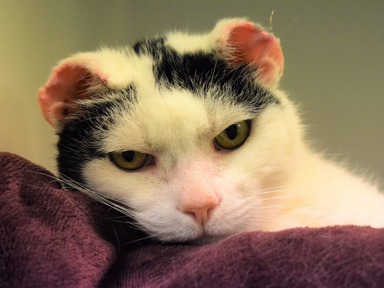-
Adopt a cat
- Adopt a cat
- Advice on getting a cat
- Adopt a cat FAQs
- What is our adoption fee?
-
Adopt a cat
Find out about how to adopt a cat with Cats Protection
-
About Cats Protection
- About Cats Protection
-
About Cats Protection
Find out about the amazing work that we do for cats in the UK.
About Cats Protection
- What we do
- Help and advice
-
Adopt a cat
Adopt a cat
Find out about how to adopt a cat with Cats Protection
-
About Cats Protection
About Cats Protection
Find out about the amazing work that we do for cats in the UK.
About Cats Protection - What we do
- Help and advice


 Though all three cats have now recovered and have new homes, the charity is keen to make cat owners aware of the potential risks.
Though all three cats have now recovered and have new homes, the charity is keen to make cat owners aware of the potential risks. 